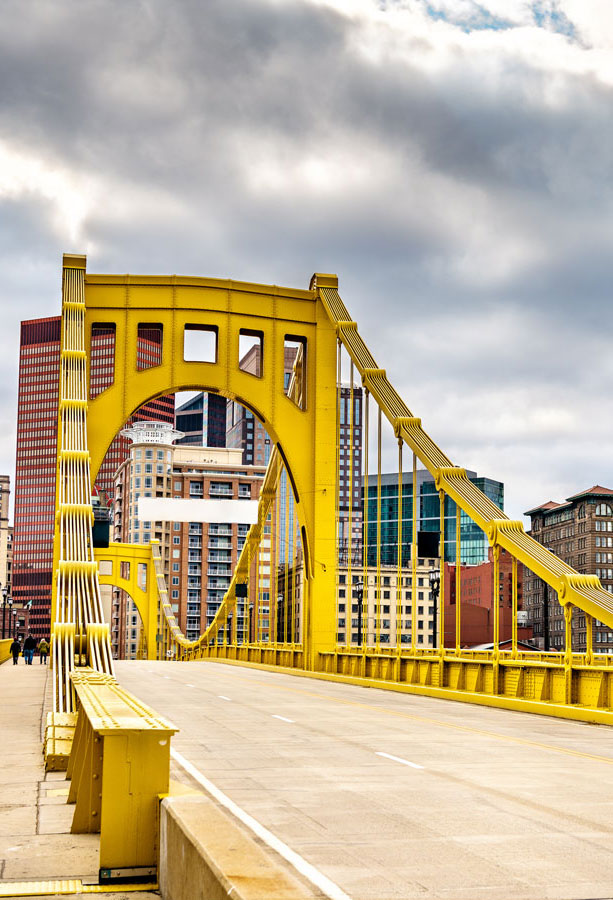In the late 19th and early 20th centuries, cities in the Midwest became some of the largest population centers in the U.S. — buoyed by their strategic locations and contributions to auto manufacturing, steel production, and transportation. As hubs of commerce and innovation, they attracted people from around the country. But in the later half of the 20th century, these cities — key points in what’s known as America’s “Rust Belt” — faced the challenges of deindustrialization, technological advances, globalization, and population decline. Today, many of the places that were once the heart of American manufacturing and industry have diversified their economies and revitalized their urban spaces. Discover the fascinating histories of five once-thriving Rust Belt cities and why they’re well worth visiting today.
Detroit, Michigan
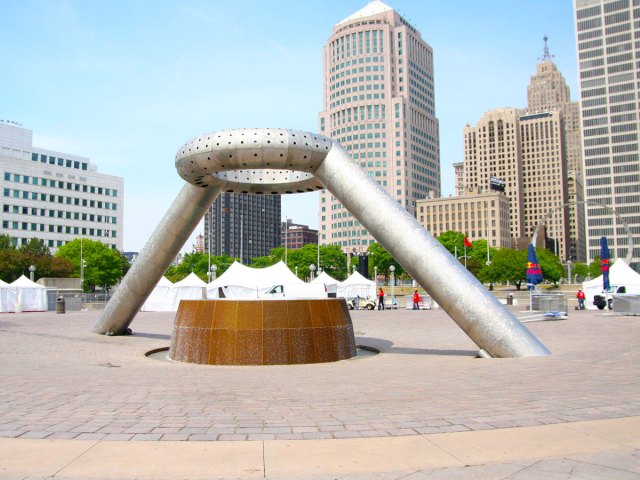
For much of the first half of the 20th century, Detroit flourished as a hotbed of auto manufacturing. The “Big Three” car companies — General Motors, Ford, and Chrysler — were all based in Detroit’s metropolitan area, and the city saw an influx of people from all over the country in pursuit of well-paying jobs. By 1950, the population swelled to a peak of 1.8 million residents, making it the fifth-largest city in the country. By the mid-20th century, due mainly to economic and technological shifts, Motor City started on a path of population decline. In 2013, Detroit filed for bankruptcy, becoming the largest American city to ever do so.
Fortunately, modern-day redevelopment of the city’s once-beautiful buildings is well underway. Cultural institutions such as the Motown Museum and Detroit Institute of Arts are thriving, neighborhoods like Eastern Market are artistic and culinary hubs, and green spaces like the Riverwalk and Belle Isle Park in the city’s southeast are undergoing revitalization.
Buffalo, New York
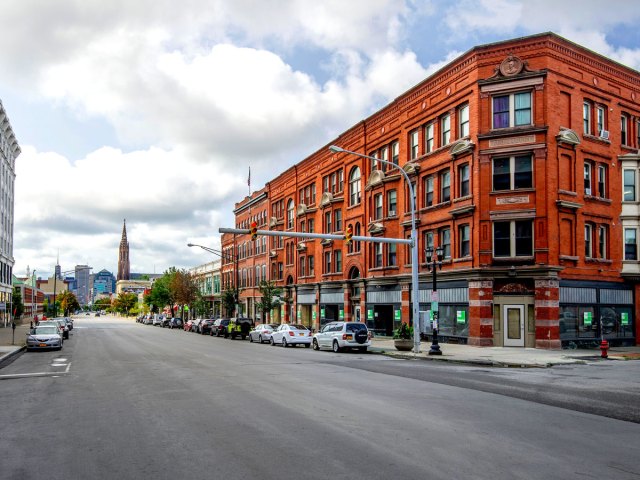
Buffalo earned its “Queen City” nickname in the mid-1800s, when it was one of the most prosperous cities in the Great Lakes region. After the completion of the Erie Canal in 1825, Buffalo became a pivotal hub for transporting goods from Chicago to New York City and onwards via the Atlantic Ocean. Other industries emerged to take advantage of the products that passed through — the grain industry became a key component of the city’s growth, and Buffalo’s outer harbor was home to manufacturers of steel and other materials that contributed to the city’s industrial prominence.
By 1900, Buffalo was the eighth-largest city in the United States and the sixth-busiest water port in the world. Its population had grown to over 350,000 people and would reach its peak of 580,000 in 1950 — about half of what it is now. When the St. Lawrence Seaway opened in 1959, the use of the Erie Canal greatly diminished. Like many American Rust Belt cities, this also coincided with postwar suburbanization, increased access to cars, and manufacturing automation — depleting the city of its finances, economic prowess, and population.
But Buffalo has embarked on a path of revitalization, as the state of New York is channeling substantial investments into the city. At the grassroots level, entrepreneurs are venturing into small businesses such as breweries, restaurants, and housing projects. This has turned previously overlooked neighborhoods into vibrant pockets that are fueling the city’s revival.
Cleveland, Ohio
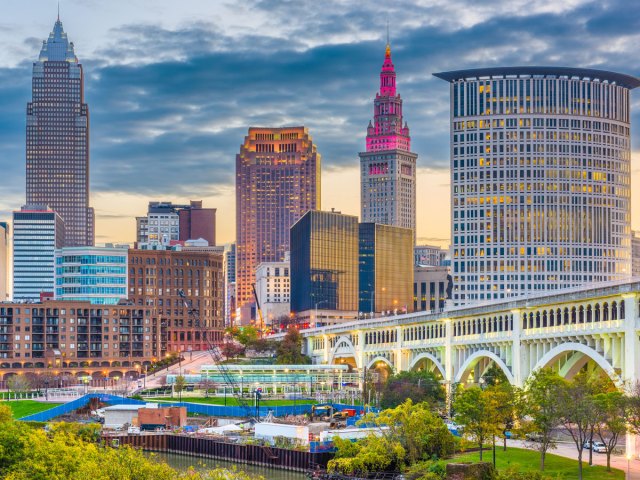
In the late 19th and early 20th centuries, steel mills, coal mines, automotive factories, and John D. Rockefeller’s Standard Oil refineries contributed to Cleveland’s economic prosperity. The city’s advantageous location on the shores of Lake Erie facilitated transportation and trade, turning it into a bustling manufacturing center.
But by the 1960s, Cleveland’s industry was in decline, feeling the effects of inflation as well as international competition. The city also experienced tensions and violence among its diversifying population, which led to a suburban exodus. And in 1969, oil on the Cuyahoga River caught fire, helping to solidify Cleveland’s unfortunate nickname of “Mistake on the Lake.”
Although the city’s population is still only a fraction of its peak of 914,000 people, Cleveland’s fortunes have been changing in recent years. While manufacturing is still an important industry in the city, Cleveland has also diversified its economy, focusing on sectors like healthcare, technology, and higher education — with the Cleveland Clinic, Case Western Reserve University, and University Hospitals all prominent institutions in the city. Meanwhile, investments in waterfront redevelopment, cultural attractions like the Rock and Roll Hall of Fame, and a growing culinary scene have given the city new vitality — transforming Cleveland from a classic Rust Belt city to a multifaceted urban center.
St. Louis, Missouri
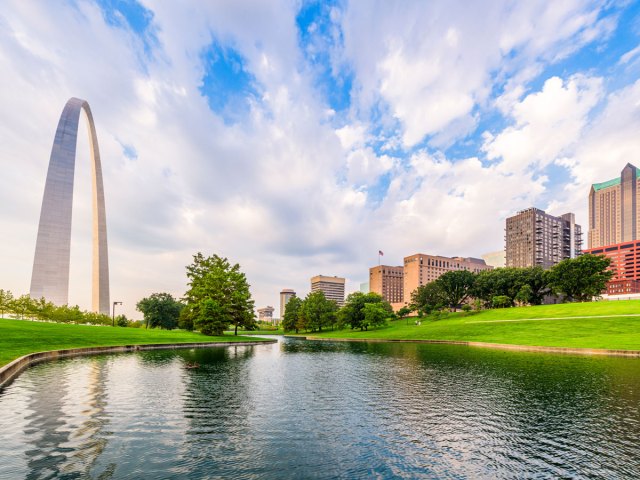
Situated along the Mississippi River, St. Louis, Missouri, became an important transportation and trade center in the 19th century. The “Gateway” city was also an early part of the U.S. automotive industry, and throughout the early 20th century, St. Louis also excelled in a range of other industries, including brewing and aerospace. But like many urban areas at the time, St. Louis experienced financial hardships during the Great Depression.
While the city’s industrial output ramped back up with ammunition and vehicle production during World War II, pushing the population over 850,000 by 1950, St. Louis would face several decades of hard times ahead. Urban planning during this era — including interstate highways that cut through several neighborhoods — sent the city population into the suburbs. By 1980, the St. Louis’ population had fallen to about 450,000.
In recent years though, St. Louis has embarked on a journey of reinvention. Finance and technology now fuel the city’s economy, and the city’s fascinating cultural attractions — such as the Gateway Arch, the St. Louis Art Museum, and Forest Park — continue to attract visitors and locals alike. St. Louis’s unique neighborhoods and vibrant culinary scene — notably its barbecue culture — add to the city’s renewed charm.
Pittsburgh, Pennsylvania
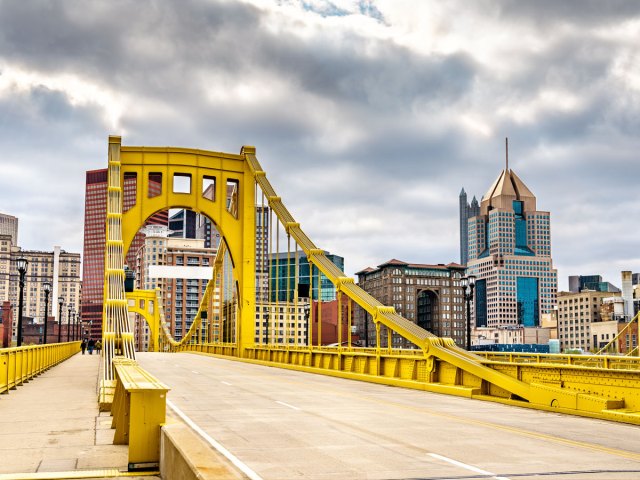
Steel mills were once a defining part of Pittsburgh’s landscape. Throughout the late 19th and early 20th centuries, the “Steel City” stood as an American industrial powerhouse fueled by major companies like U.S. Steel and Carnegie Steel, built by infamous American industrialist Andrew Carnegie. Pittsburgh’s population swelled, and by 1950, it reached its peak at over 670,000 people — making it the 12th largest city in the country at the time.
During the 1970s, however, the steel industry in the U.S. started to crash. The economic downturn of the 1970s and 1980s, as well as increased global competition, began to take a toll on Pittsburgh’s primary industry. As the steel mills closed and jobs were lost, the city’s population steadily declined.
In recent years, Pittsburgh has successfully transformed itself into a hub for technology and medicine, and its economy now revolves around robotics, artificial intelligence, and healthcare. Stadiums for several successful and popular major-league sports teams now take the place of steel mills, including the MLB’s Pittsburgh Pirates, the NHL’s Pittsburgh Penguins, and the NFL’s Pittsburgh Steelers. The city’s innovative spirit, along with its investments in clean energy and environmental restoration, has allowed Pittsburgh to rise from the ashes of deindustrialization.
More from our network
Daily Passport is part of Inbox Studio, which publishes content that uplifts, informs, and inspires.






